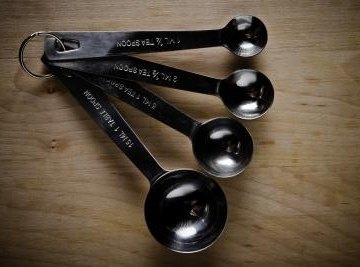Understanding Measurements: How Many Ounces Are in 2 Tablespoons?
When it comes to cooking and baking, understanding measurements is crucial for achieving the desired results. One common question that arises is how many ounces are in 2 tablespoons. This article will explore the conversion between tablespoons and ounces, provide practical examples, and discuss the importance of accurate measurements in culinary practices. Additionally, we will address frequently asked questions and present a table summarizing key information.
The Basics of Measurement
In cooking and baking, measurements can be expressed in various units, including teaspoons, tablespoons, fluid ounces, and cups. Understanding these conversions is essential for both novice and experienced cooks.
Common Measurement Units
- Teaspoon (tsp): A small unit of measurement often used for spices, extracts, and other small quantities.
- Tablespoon (tbsp): A larger unit of measurement, commonly used for liquids and larger quantities of ingredients.
- Fluid Ounce (fl oz): A unit of volume used for measuring liquids.
- Cup: A larger unit of measurement, often used for both dry and liquid ingredients.
Conversion Between Tablespoons and Ounces
To answer the question directly:
- 2 tablespoons = 1 fluid ounce.
This conversion is based on the standard measurement system used in the United States. Understanding this conversion is particularly important when following recipes that may use different measurement units.
Why Accurate Measurements Matter
Accurate measurements are crucial in cooking and baking for several reasons:
- Consistency: Following precise measurements ensures that recipes turn out the same way each time they are made. This is especially important in baking, where chemical reactions depend on accurate ingredient ratios.
- Flavor Balance: In cooking, the right amount of spices, herbs, and other ingredients can significantly impact the overall flavor of a dish. Accurate measurements help achieve the desired taste.
- Texture and Structure: In baking, the texture and structure of the final product can be affected by the precise amount of ingredients used. For example, too much flour can lead to a dense cake, while too little can result in a flat one.
- Food Safety: Accurate measurements are essential for food safety, especially when it comes to cooking meats and preparing dishes that require specific temperatures.
Practical Examples of Using Tablespoons and Ounces
To illustrate the importance of understanding the conversion between tablespoons and ounces, here are some practical examples:
- Recipe Example: A recipe for a salad dressing may call for 2 tablespoons of vinegar. Knowing that this is equivalent to 1 fluid ounce can help when measuring out larger quantities if the recipe is doubled.
- Ingredient Substitution: If a recipe requires 1 ounce of an ingredient, knowing that this equals 2 tablespoons can simplify the measuring process, especially when using measuring spoons.
- Scaling Recipes: When scaling a recipe up or down, understanding the relationship between tablespoons and ounces allows for more accurate adjustments. For instance, if a recipe calls for 4 tablespoons of an ingredient, knowing that this equals 2 fluid ounces can help when doubling or halving the recipe.
Conversion Table
Here’s a simple conversion table for common measurement units used in cooking:
| Measurement | Equivalent in Ounces | Equivalent in Tablespoons |
|---|---|---|
| 1 tablespoon | 0.5 ounces | 1 |
| 2 tablespoons | 1 ounce | 2 |
| 4 tablespoons | 2 ounces | 4 |
| 8 tablespoons | 4 ounces | 8 |
| 16 tablespoons | 8 ounces | 16 |
| 1 cup | 8 ounces | 16 tablespoons |
Frequently Asked Questions (FAQ)
Q1: How many ounces are in 1 tablespoon?
1 tablespoon is equivalent to 0.5 fluid ounces.
Q2: Why do some recipes use ounces instead of tablespoons?
Some recipes use ounces for liquids because it provides a more precise measurement, especially when dealing with larger quantities.
Q3: Can I use a regular tablespoon to measure ingredients?
Yes, a standard tablespoon (15 ml) is commonly used for measuring ingredients in cooking. However, ensure that it is a measuring tablespoon and not a regular table spoon, which may vary in size.
Q4: How can I convert other measurements to ounces?
To convert other measurements to ounces, you can use conversion charts or online calculators. For example, 1 cup is equivalent to 8 fluid ounces.
Q5: Are there different types of ounces?
Yes, there are two types of ounces: fluid ounces (for measuring volume) and dry ounces (for measuring weight). In cooking, fluid ounces are typically used for liquids.
Conclusion
Understanding the conversion between tablespoons and ounces is essential for anyone who enjoys cooking or baking. Knowing that 2 tablespoons equal 1 fluid ounce can help ensure accurate measurements, leading to consistent and delicious results in the kitchen. By paying attention to measurements, cooks can achieve the desired flavors, textures, and overall success in their culinary endeavors.
Summary Table
| Measurement | Ounces | Tablespoons |
|---|---|---|
| 1 tablespoon | 0.5 | 1 |
| 2 tablespoons | 1 | 2 |
| 4 tablespoons | 2 | 4 |
| 8 tablespoons | 4 | 8 |
| 16 tablespoons | 8 | 16 |
| 1 cup | 8 | 16 |
For more information on cooking measurements, you can refer to the Wikipedia page on cooking measurements.



